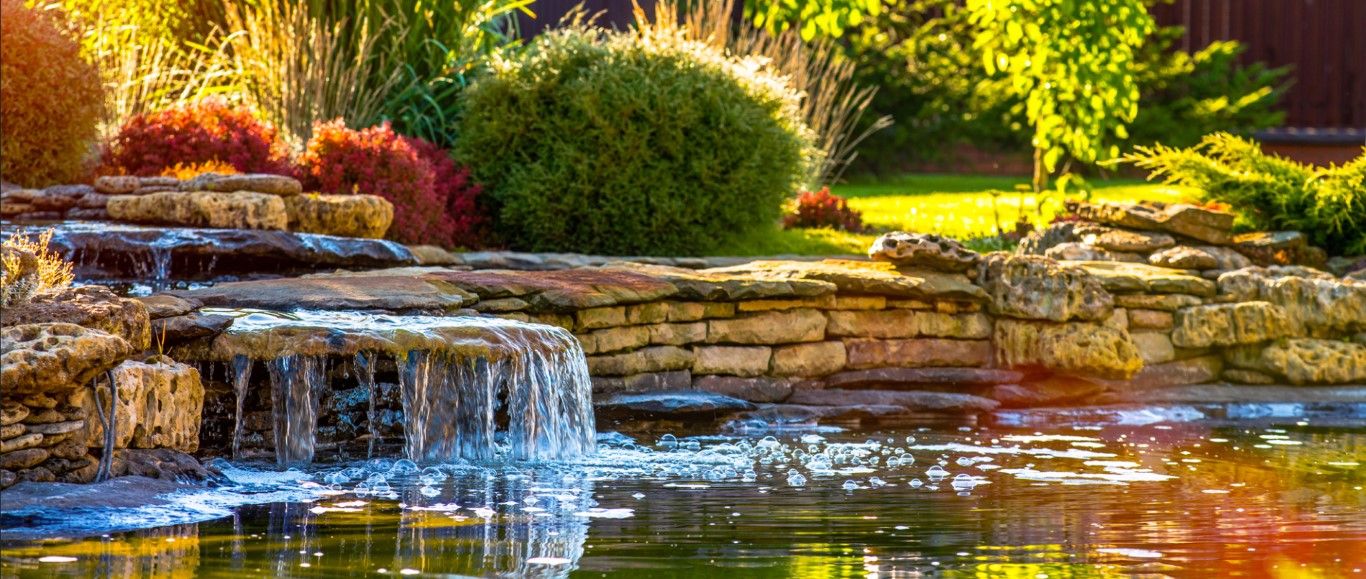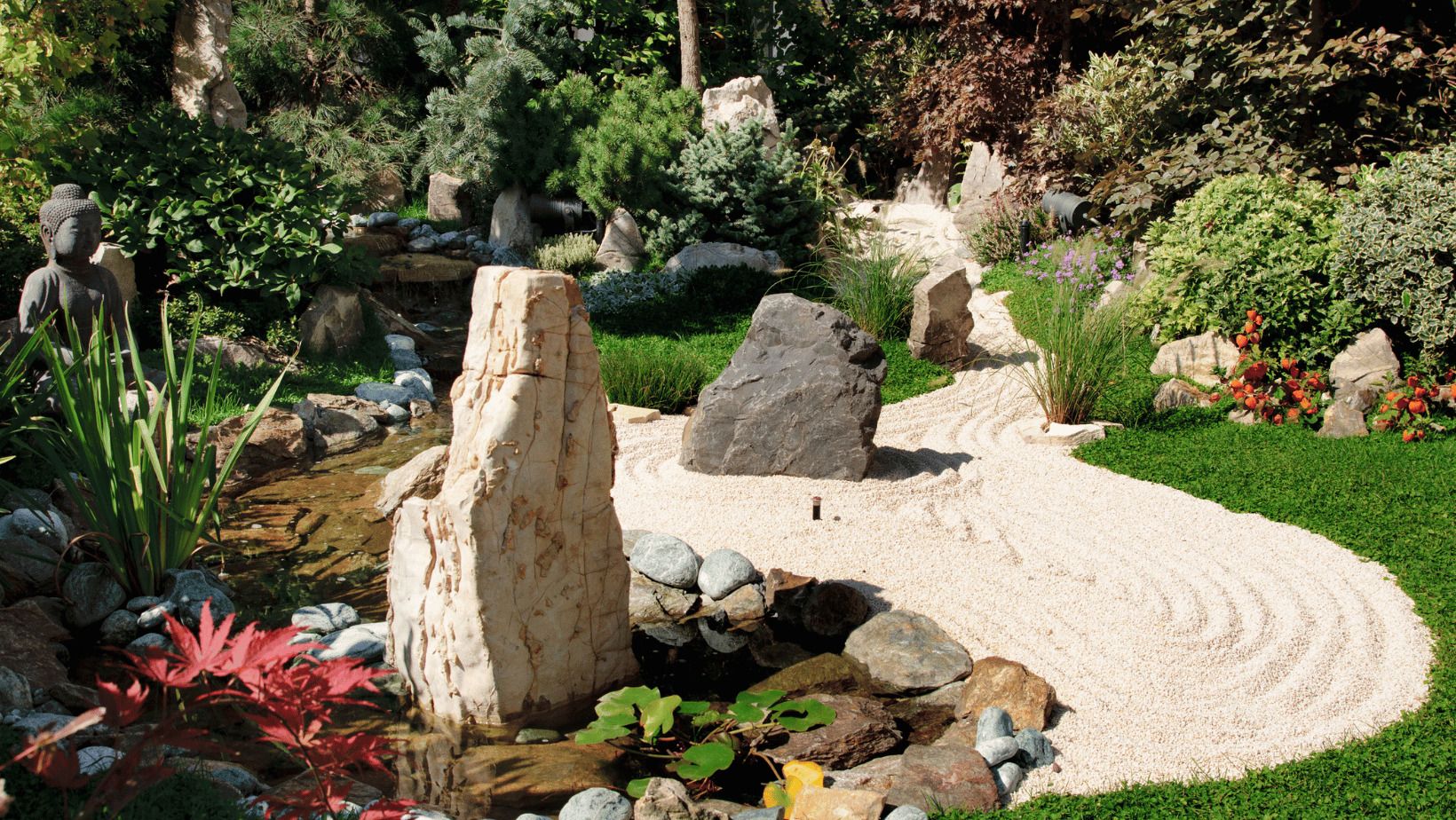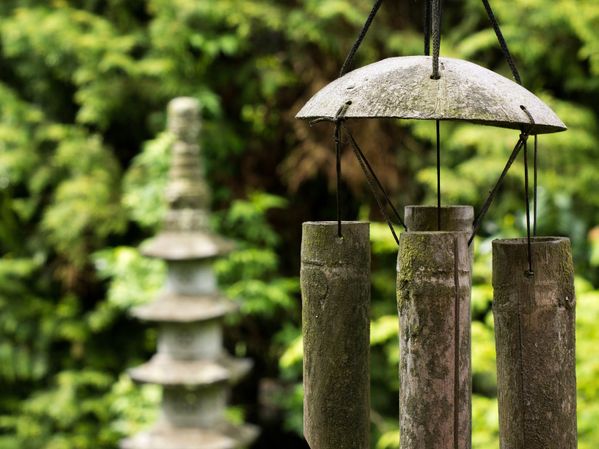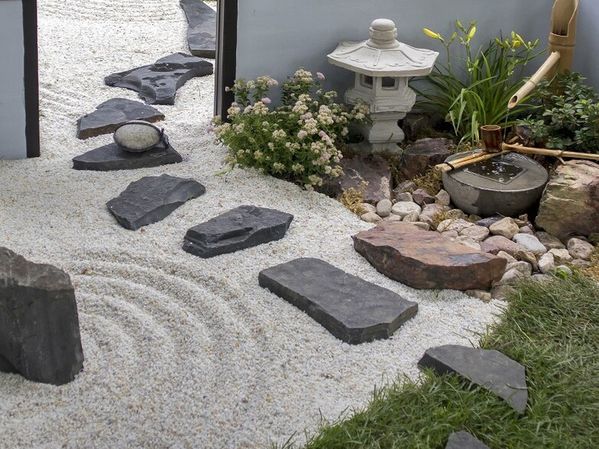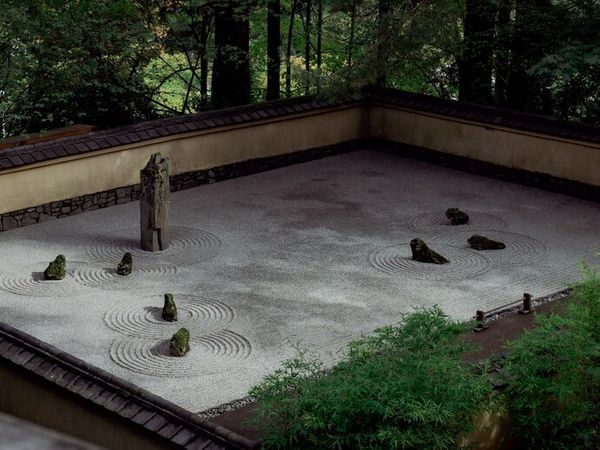How to: Create a Zen Inspired Garden
10 Easy Steps to Creating the Perfect Zen-inspired Garden
Get the Guide: 10 Steps to Creating the Perfect Zen-Inspired Garden
Japanese zen gardens are works of art. Immaculate, serene and perfectly poised, these gardens have often taken a lifetime of study and devotion to produce. Most of us do not have the time to put aside for learning the gentle art of cloud pruning, intricate gravel maintenance or Kanso (the Japanese equivalent of Feng Shui), but we can take inspiration from these life-affirming garden ideas to bring a little magic, reflection and quiet contemplation to our own outdoor spaces. This can be achieved with subtle touches - raked pebble, well-placed rocks, topiaries, the use of moss and water features. If you don't have space outdoors, you can even make a mini zen garden to place on your coffee table for inspiration.
For advice on creating your own zen-inspired garden, download our free guide, or continue reading. For everything else, come visit us at Stone & Water World. Here are 10 simple design tips to help you create your own zen backyard:
1. Simplicity is Key
The sound and sight of water is automatically soothing, which is why a water feature is a great addition to any garden. When choosing a water feature for your Japanese inspired garden, less is more. Zen garden design is all about simplicity. To add interest, surround your feature with smooth pebbles and create a border with gravel.
2. Create a Sensory Experience
An important aspect of every zen garden is the soundscape that's created by the gentle flowing of water from a water feature, the notes of a wind chime moving in the wind or the crunching of gravel underfoot. Sound is a powerful tool that helps humans relate to their surroundings and can be utilised to evoke calm, peaceful emotions that fit your zen space. The sensory experience is just as important as the visual one.
3. Stepping Stone Pathway
Every garden needs a path or two to get from the lawn to shed, or from the house to the gate. But pathways don't always have to be purely practical. When weaved around a small tree, a statue, or a body of water, they can also be used to encourage mindfulness or draw attention to certain areas of your garden. Pathways with natural stepping stones add interest and texture to your garden and they're very easy to put together too.
4. Curate Small Pockets of Interest
Create pockets of interest in your garden by arranging miniature rockeries alongside your path, lawn, or gravelled space. Pick complementary tones and add a mixture of textures for visual appeal that mirrors the natural environment.
5. Use Large Stretches of Gravel
Fine gravel or sand is one of the most common features of a Zen garden, often selected in pale hues. It is known to symbolize water, and can be carefully raked into patterns to create 'waves'. To recreate the authentic look, add a dedicated gravel area to your plot, perhaps with a border of larger rocks.
6. Choose Different Shades of Stone
Try positioning large stones and rocks as focal features in your plot. They will provide a sculptural element in a naturalistic way. To take things one step further, opt for two tones of gravel and get creative with shapes. To keep things in place, surround your shapes with stone edging – view our incredible range of decorative rocks and paving stones online.
7. Plant Ferns amongst your Rocks
It has been proven that plants and flowers can increase a person's Zen, making them feel more relaxed and calm. Plants reduce stress and anxiety and increase memory, attentiveness and productivity in the home and workplace. Plant amongst stone walls, at the sides of borders, or next to water features to welcome vibrant tones of green to your plot. They look especially striking amongst mossy areas – another classic choice for Japanese-inspired spaces.
8. Go for Curved Edges
Zen gardens benefit from soothing organic shapes, so when thinking about the landscaping of your plot, welcome in curves. This can be from your lawn and paths to the lines raked in your gravel. If you want to take this to the next level, try shaping a topiary. Its been found that viewing objects with sharp edges activates a part of the brain that processes fear, whereas curves feel organic. Curves are, in general, felt to be more beautiful than straight lines, they are more graceful and pliable which is why they are perfect for creating a zen space.
9. Add an Enchanting Bridge
Bridges are a well-known addition to Japanese-style gardens, and work well in Zen gardens too. This isn't just because of their aesthetic value – bridges can also represent a journey of transition and encourage feelings of reflection. Incorprating a small bridge over your water garden or landscaped pond area adds dimension and structure to your garden and offers a delightful focal point that you can control to draw attention to a particular portion of the garden which you find most charming and beautiful.
10. No Space? Try a Mini Zen Garden
If you're short on space or live in an apartment, you can fill little planters with pebbles, gravel and green elements and keep them inside the house, on the desk, on the balcony or even out on the porch. They’re compact and they bring freshness and beauty into our lives. They’re also really fun and enjoyable to put together!
If you enjoyed this guide, you may also want to read:
- How to: Spruce up your Outdoor Spaces
- How to: Create a Pebble and Stone Pathway
- Create a Low Maintenance Garden

